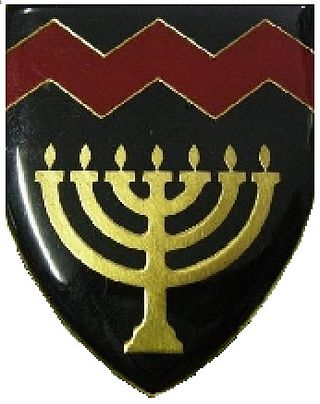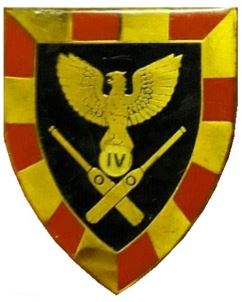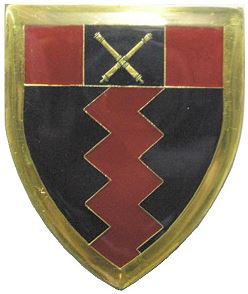
The Royal Regiment of Artillery, commonly referred to as the Royal Artillery (RA) and colloquially known as "The Gunners", is one of two regiments that make up the artillery arm of the British Army. The Royal Regiment of Artillery comprises thirteen Regular Army regiments, the King's Troop Royal Horse Artillery and five Army Reserve regiments.

The State Artillery Regiment is a reserve artillery regiment of the South African Army.

The South African Army Artillery Formation is the controlling entity of all South African Army artillery units. It draws much of its history from the South African Artillery, established in 1934 but with roots that reach back to 1921. The formation consists of both regular and reserve units. There is a separate South African Army Air Defence Artillery Formation that directs army anti-aircraft warfare units.

Regiment Potchefstroom Universiteit is an artillery regiment of the South African Army. As a reserve unit, it has a status roughly equivalent to that of a British Army Reserve or United States Army National Guard unit. It is part of the South African Army Artillery Formation.

The Autshumato Anti-Aircraft Regiment is a reserve air defence artillery regiment of the South African Army.
The 30th Field Artillery Regiment, RCA is a bilingual Canadian Army artillery regiment located in Ottawa, Ontario, and is allocated to 33 Canadian Brigade Group, 4th Canadian Division. The unit parades at a new complex at the Canadian Forces Support Unit (Ottawa) - Uplands Site following the collapse of their former location at CFRB Dows Lake under the weight of snow in 2009. The unit performs ceremonial gun salute duties when required in the National Capital area, and is a field unit equipped with 105 mm Howitzers, C3.

The Steve Biko Artillery Regiment is a airborne artillery regiment of the South African Artillery.

The School of Artillery is the South African Army's specialized artillery training school

The South African Army Air Defence Artillery Formation is the controlling entity of all South African Army Air Defence Artillery units. This Formation consists of both regular and reserve units.

4 Artillery Regiment is based at Potchefstroom, responsible for the training of soldiers allotted to Field and Medium Artillery.

10 Artillery Brigade was a South African Defence Force formation designed for mass artillery barrages, mainly for the 7 South African Infantry Division or 8 South African Armoured Division, as well as an ad hoc formation during Operation Prone, when needed and detached and reattached where required. Smaller components would then be used at the battlegroup level.

14 Artillery Regiment was a South African Artillery unit whose name was used twice. It was re-established in Potchefstroom in 1974 and was a full-time unit responsible for the training of Permanent Force and National Service personnel.

19 Rocket Regiment was a rocket artillery regiment of the South African Artillery.
Lt Col Mimy Matimbe is a gunner officer in the South African Army and was appointed as the first female Commanding Officer in the South African Army Artillery Formation when she took over command of 4 Artillery Regiment on 7 April 2017.

Regiment University of Cape Town was an artillery regiment of the South African Army. As a reserve unit, it had a status roughly equivalent to that of a British Army Reserve or United States Army National Guard unit. It was part of the South African Army Artillery Corps.

Regiment University of Witwatersrand was an artillery regiment of the South African Army. As a reserve unit, it had a status roughly equivalent to that of a British Army Reserve or United States Army National Guard unit. It was part of the South African Army Artillery Corps.

Regiment University of Pretoria was an artillery regiment of the South African Artillery. As a reserve unit, it had a status roughly equivalent to that of a British Army Reserve or United States Army National Guard unit. It was part of the South African Army Artillery Corps.

2 Locating Regiment was an artillery regiment of the South African Artillery. The regiment provided divisional troops but was typically organized to allocate locating batteries to brigades.
1st Medium Regiment was an artillery regiment of the South African Army, formed in 1946 following World War II.
The Durham Artillery Militia was a part-time reserve unit of Britain's Royal Artillery based in County Durham from 1853 to 1909. Volunteers from the unit served in the Second Boer War where they distinguished themselves fighting as infantry in the defence of Fort Prospect.



















